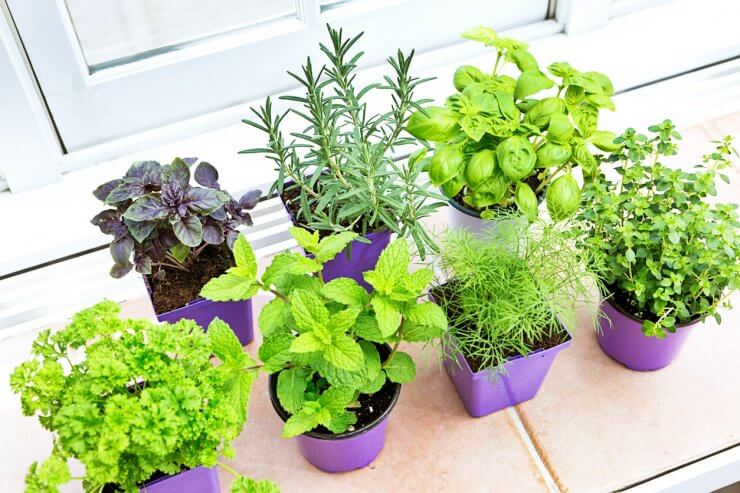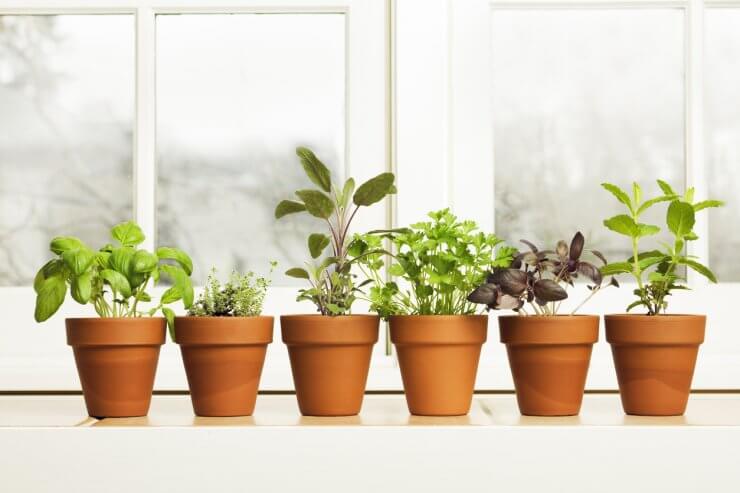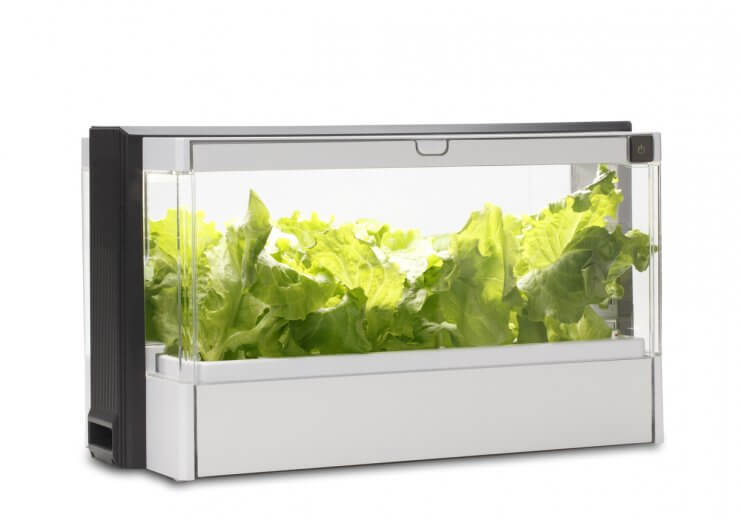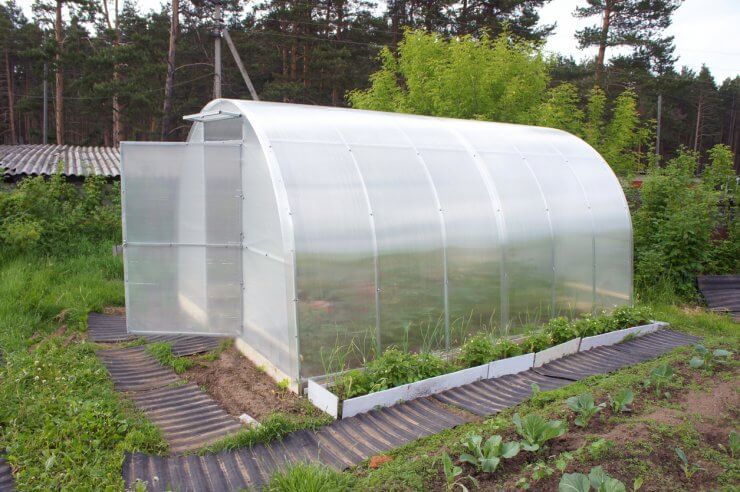
Are you suffering from garden woes? Do you have a small yard with no garden space? Live in an apartment and can’t grow outdoors? Want to grow herbs and veggies all year long instead of just half of the year? If you answered yes to any of these questions, then growing herbs and vegetables indoors is the answer to your gardening prayers.
Growing an indoor garden can look differently depending on which materials you use, where you set up your indoor garden, and what seeds or seedlings you choose to plant. The great thing about growing herbs and vegetables indoors is that they can fit nearly every budget and activity level. Here’s some basic information on the How, Where, and What of indoor gardening.
Discover the 3 top options for growing vegetables indoors—when you access the FREEBIE Growing Vegetables Indoors for Beginners, right now!

Container gardens
How
Container gardens are the quickest and most affordable way for growing herbs and vegetables indoors. With a bit of potting mix, seeds or seedlings, water, and sunlight you can set up an indoor garden in mere hours. With garden containers coming in all shapes and sizes, you have many options depending on what you choose to plant and how much space you have to work with. Creating a wall garden is a great solution for small spaces and takes advantage of often underutilized wall space.
Where
Container gardens work well in most spaces in a home, provided there is a light source (sunlight or grow light) and access to water. For many, a kitchen windowsill or countertop herb garden makes sense because there is nearby water access from the sink and likely a window or two for sunlight. By placing this garden in your kitchen, you’ll also have fast access to fresh herbs and veggies while cooking.
If you’re lucky enough to have a sunroom or a room with generous window coverage, that might also be a great place for your indoor garden. If you plan on using growing lights, your garden’s location will need to be someplace close to a power outlet or extension cord.
What
When growing herbs and vegetables indoors, container gardens work well for a diverse group of plants, herbs, and vegetables. Some great crops include container fruit trees, herbs, tomatoes, leafy greens, hot peppers, radishes, and potatoes.

Hydroponic gardening
How
When it comes to indoor hydroponic gardens, there are a few more prep steps to take before growing herbs and vegetables indoors. Some hydroponic systems are simple, like the wick method which uses a nylon wick and capillary action to bring water to the root systems of smaller vegetables and herbs. The water culture method is another simple hydroponic method that places plant roots directly into the water or growing solution. Things get a bit more involved with the “ebb and flow” method and drip method of hydroponic gardening, both requiring pumps and tubing. Things get a little pricier with closed system hydroponic kits because they usually include more features like grow lights and contain everything you need to get started.
Where
The sky (or water) is the limit with hydroponic garden locations. You’ll need to identify your light source, whether it’s natural sunlight through a nearby window or electric growing lights, which will need to be near a power source. Depending on what method you choose and what size garden you put together, plumbing and electricity access may also be a consideration.
What
If you’re using the wick method, stick with smaller plants like herbs and vegetables that aren’t heavy-feeders. If a crop requires a lot of water, like tomatoes or squash, this isn’t the method to use since the wick offers relatively less access to water.
For the other hydroponic methods, a more diverse group of herbs and veggies will thrive. With most hydroponic systems, you’ll need to be on the lookout for root diseases and rot. In general, leafy vegetables, herbs, tomatoes, peppers, and cucumbers work well in hydroponic systems.
Avoid vining and bush plants that will take up a lot of space. Large root vegetables like potatoes, carrots, onions, etc, don’t thrive in hydroponic gardens since their root systems take up a lot of space and they need nutrients found in soil to mature.

Greenhouse gardening
How
Greenhouses can take many different shapes, from sturdy buildings with cement foundations to temporary structures made from plastic sheathing and supports. Greenhouses can be stand-alone or attached to a house, garage, or shed. If you’re thinking of building a greenhouse, consider whether you want plumbing or electrical access. There are countless greenhouse kits for sale or you can even create a small cold frame from a recycled window and some straw bales to function like a mini-greenhouse.
The main purpose of using a greenhouse for growing herbs and vegetables indoors is to harness the power of the greenhouse effect. Greenhouses convert light energy into heat energy, making it possible to elongate growing seasons as well as grow vegetables and herbs that prefer warmer climates. Greenhouses also make moisture retention easier since they trap evaporated moisture and reintroduce it to plants via condensation.
Where
Greenhouses do best on the south or southeast side of a house, where it gets good sun exposure. Other sides will work too, but it’s best to avoid the north side of the house where there is usually less sun. Consider placing your greenhouse near a deciduous tree (trees with leaves that fall off before winter), since you’ll have some natural shade protecting your plants in the hottest months of the year, and full sun during the coldest months.
What
Using a greenhouse is a versatile way for growing herbs and vegetables indoors. Nearly all vegetables, herbs, and fruits will thrive in a greenhouse environment. Planting heat-tolerant crops (like peppers) in the summer and cold-resistant crops (like leafy greens) in the winter is a good strategy to take advantage of your environment. In addition to temperature, be sure that there is some airflow capability in your greenhouse to allow heat to vent as needed.
What are your favorite ways of growing herbs and vegetables indoors? What crops work best in your indoor garden? Let me know in the comments!
Discover the 3 top options for growing vegetables indoors—when you access the FREEBIE Growing Vegetables Indoors for Beginners, right now!




